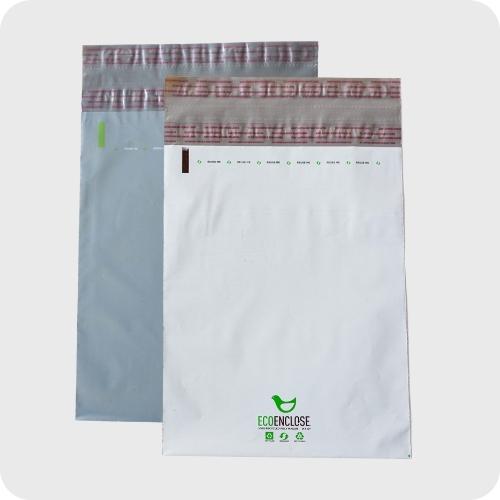Reusable Mailers Sustainability Calculator
Should You Switch from Poly Mailers to Reusable Mailers?
Maybe! The answer depends on how many times your reusable mailer actually gets used. This calculator is designed to help you estimate how many uses or "cycles" your reusable mailer has to go through to ensure it has the equivalent carbon footprint of poly mailers you are replacing. If you're making the leap from poly mailers to reusable mailers, you are likely looking for a shipping solution that reduces your carbon emissions! So the number of cycles outputted in this calculator should be considered a bare minimum rate for your reusable mailers to hit.
Plug in your current poly mailer size and recycled content, and your desired reusable mailer, and the calculator will output the minimum average cycles your reusable mailers need to hit in order to have the same carbon emissions as your poly mailers. Here is some context to help you use this tool effectively.
Cycles:
The number of outbound shipments your reusable mailer makes. If you are a traditional apparel company, each cycle is a shipment to a customer. If your customer uses that reusable mailer to return items back to you, this is part of that same cycle. If no returns are needed, then your customer will simply send back an empty mailer (also part of that same cycle). If returns are baked into your business model, as is the case with clothing rental and subscription brands, one cycle includes the outbound shipment from the brand to customer, and the return shipment (when the mailer returns full of goods).
Poly Mailer Second Use:
Some poly mailers, including our 100% recycled options, are designed for a second use. There is a question below asking what percent of your poly mailers are likely to be used for a second shipment. This should not include instances when the poly mailer is used for returns or exchanges, but should only factor in situations in which your customers functionally use your mailers a second time - as a garbage bag, as a storage bag, or to ship out goods to friends or their own customers.
Reusable Mailer Thickness:
EcoEnclose currently offers a medium and thick reusable mailer. The medium thickness version is highly functional and should work for most companies. Our thick option is a more luxury product, and is a great solution for premium brands. We are in the process of launching a thin option as well, and have included this option in our calculator to help users understand the ecological ramifications of working with different material weights.
Cost Efficiency:
Do you currently ship in paper mailers? Use a poly mailer that is thinner or thicker, or one with partial recycled content? We kept this calculator simple so it can be an easy starting point for brands considering reusable mailers. If you need a more complicated analysis, we have you covered. Contact us and we will provide a more nuanced assessment based on your unique situation.
Reusable Mailer: Breakeven Cycles Calculator
The calculator is based on data generated through Trayak's EcoImpact-Compass Packaging.
The table below gives you data on how many cycles, on average, your reusable mailers need to be used in order to have an environmental impact that is the same as the poly mailer you are replacing. The output shows your targeted reuse rate based on a variety of different eco metrics.
How many cycles are needed to ensure your reusable mailer has the same eco impact as your poly mailer?
| Environmental Metric | Average Cycles for a Breakeven Impact |
|---|---|
Additional Resources for Reusable Mailers

Read Our Reusables Guide
Is reusable packaging right for your business? Read our guide for reusable packaging for eCommerce.

Shop Reusable Mailers
100% recycled fabric with zipper and snap closures. Designed for multiple uses and recyclability at the end of their useful life.

Shop Poly Mailers
100% recycled, 50% post-consumer waste. Thin-film recyclable, tear strip for easy opening, second adhesive strip for reuse.

Questions?
Moving to Reusable Mailers can be complicated. We are here to help you navigate your sustainability, cost, and operational questions.

